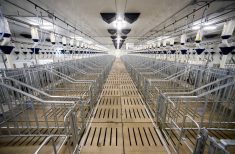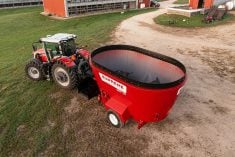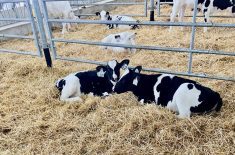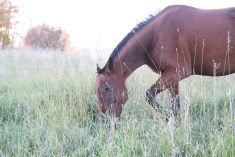The first 24 hours of a piglet’s life are critical. Get it right, and you’re on your way to a healthy, thriving market hog. Get it wrong, and you could be looking at struggles that will follow through the lifetime of that animal.
“If we think about all mortality from birth to market, half of that is occurring from birth to wean,” said Laura Greiner, an associate professor of animal sciences at Iowa State University.
Grenier was among the speakers during the Manitoba Swine Seminar in early February.
Read Also
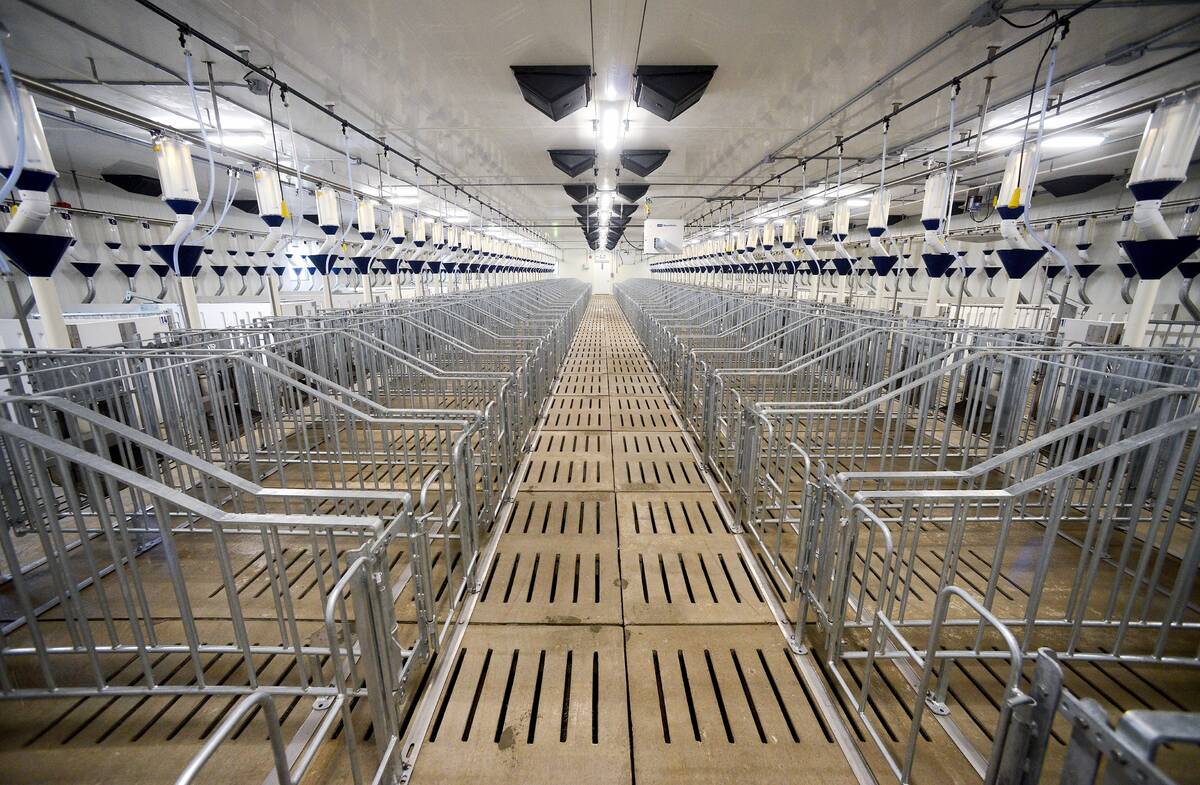
Real farm talk on switching to open sow housing
What actually worked for these Prairie pig farmers when it came time to swap gestation stalls in their barns for group sow housing? What were the results?
WHY IT MATTERS: The profit Canadian pork producers get per adult pig starts in the first day of their life when they’re still a piglet, setting them up for better health and performance down the line.
Current breeding trends in the industry prioritize the number of animals born over birth weight, Greiner told the room. This has led to an increase in the number of newborn piglets weighing in at 700-900 grams.
That’s a potential problem for animal health outcomes and, ultimately, the farmer’s bottom line, she said. Piglets weighing less than 700 grams have nearly a 90 per cent mortality rate, while those around 900 grams experience about 40 per cent mortality. More piglets weighing less, significantly complicates management and care in the barn.
Starting piglet health off right
“I’m not going to tell you ‘this’ is the exact way to handle Day One pig care, as every farm and production system is different, with unique needs,” said Greiner, but noted there are a few areas farmers can prioritize during the first precious hours of a piglet’s life.
Decisions made during this window can influence survival and growth potential.
Who’s the mother?
Care starts with gilt selection, she said. Greiner recommended selecting gilts with enough teatsto support a large litter. Those teats should also be evenly spaced so that every piglet has room to nurse.
She also flagged the sow’s body condition throughout gestation. It should be monitored, and diet adjusted to ensure a healthy fat and amino acid profile to support colostrum production.
For industries like beef cattle, that’s often about making sure the pregnant animal’s body condition is high enough. For swine, concern can swing the other way.
“Sows that have more than 2.4 centimetres of back fat actually have poor colostrum quality,” said Greiner. “So we don’t want overweight sows.”
Best practice for piglet birth
Setting up a clean, dry farrowing house with properly prepared heat zones ahead of the birth is essential for piglet health, the speaker noted.
Once the sow farrows, the clock is ticking. Cold, wet piglets are a recipe for problem, while warm and dry piglets start nursing quickly, getting that key shot of nutrition and immunity-boosting colostrum.
“Cold pigs don’t nurse; they’re just going to shiver in a corner or, worse yet, they lean up next to mom and then she rolls over,” said Greiner. “If they’re not nursing, they’re not getting colostrum, which could lead to enteric diseases down the road.”
The importance of piglet colostrum intake
Like other livestock species, colostrum is essential for piglets. While it’s widely understood to provide vital antibodies, it also contains maternal immune cells that further bolster the piglet’s immune system. These immune cells are part of the ‘entero-mammary system,’ which facilitates the transfer of bacteria from the sow’s gut to the piglet, helping to establish the piglet’s essential gut microbiota, Greiner noted.
Piglets can only benefit from colostrum for a brief window, making the timing of their first intake critical for survival and health.
“We talk about the first six hours because this is when we start to see gut closure in the piglet, meaning they can no longer absorb immunoglobulin,” said Greiner. “By 24 hours, that process is complete.”
There’s also only so much colostrum to go around and, as litter size increases, each piglet gets less colostrum. This puts the youngest piglets in a litter at a disadvantage; their older siblings get to the teat first.
Assuming the labour is available, Greiner pointed to research suggesting that actively drying piglets and helping them nurse can reduce pre-weaning mortality by up to 38 per cent.
“So, there is an opportunity. It’s effective, but it comes at a cost,” she said, referring to the time investment required for drying each piglet.
Is split suckling worth it?
The practice of split suckling involves rotating piglets. Half nurse from the sow while the other half warms up. Then they swap. The goal is for all piglets to receive equal amounts of colostrum.
The research on the effectiveness of that strategy is mixed, Greiner warned. She pointed to two studies that showed a positive effect with the practice, while others found no benefit or even negative impacts.
In one study, pigs with enough teats per sow showed no improvement, and larger piglets were disadvantaged, unable to nurse long enough to meet their nutritional needs. Smaller piglets also showed limited benefits in terms of survival. “But I do think that this is important,” she said. “When you have large litters, there may be a benefit to split suckling.”
Umbilical cord care
Umbilical cords can be a point of infection, as they are often still carrying bacteria. Attendees were told they should trim and disinfect the cords to reduce the risk of umbilical hernias and other infections.
“Research shows that 88 per cent of those umbilical cords still have bacteria in them,” said Greiner. “And that umbilical cord is a freeway right into the body.”
Cross fostering
Cross fostering—moving piglets to different sows to ensure all have access to a teat—should be done carefully. The rule of thumb used to be 72 hours, but Greiner said research now shows it’s best to move piglets within the first 24 hours, after they’ve had colostrum. Delaying this process can disrupt the bonding relationship between piglet and sow, which can also affect survival rates.
“These little critters, they know where they belong very early in life,” said Greiner. “So get this done and get this done quickly.”
Don’t forget Mom
“Make sure she’s in good body condition, maximize her intake and make sure she’s not constipated,” Greiner advised. “We don’t want her up and down those first 24 hours, because that’s going to increase crushing risk.”




